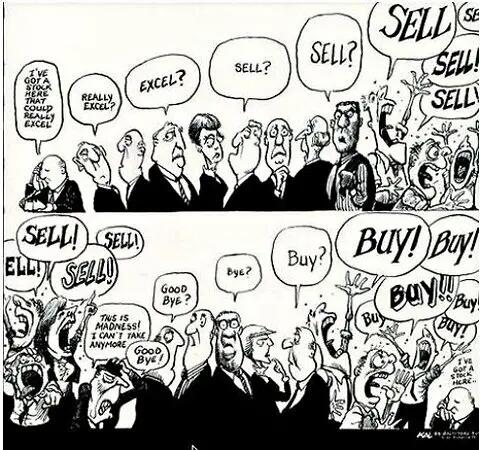
Federal Reserve Eagle in Atlanta, Georgia
Requiem for a stock market rally
By Farrokh Langdana, Director, Executive MBA Program & Professor of Finance and Economics
Faculty Blog: http://www.business.rutgers.edu/faculty/farrokh-langdana
What is going on in the economy?
I recently gave a lecture: “Why Good News is Often Bad for the Stock Market,” where I used expressions like, “Now that unemployment is at 50-year lows, etc.” Turns out that this was exactly what went down a few days later when the Federal Reserve (“The Fed”) once again raised rates to calm down an overheated economy by trying to engineer a soft landing.
Is the economy actually overheating? Is the Fed right?
The job market is actually very tight. First time jobless claims are in the vicinity of the 200,000 weekly threshold. The growth rate is nowhere near the overheating rates of the past, and labor participation is still low, but yes, companies have all reported a very tight job market. Keep in mind, we have a bizarre macro world in which the Fed is hitting the brakes, but Fiscal policy is hitting the gas with the Trump spending and tax cuts.
Why hasn’t inflation been an issue? The inflation rate has actually been lower than expectations. What is going on?
It is not the overall inflation that makes the Fed nervous – in fact it has not been the overall rate since 2000! Overheating is now an asymmetric phenomenon—here in the US and actually worldwide. The overall inflation rate may be low, but one asset class could be bubbling dangerously out of control. In 2000, the dotcoms were in a massive SAP (speculative asset price) bubble, but overall inflation was just 2.2%. Ditto in the subprime crisis when the Fed pricked the housing market bubble. The whole economy may be calm and not in any inflationary uptick, but just one market – housing, dotcoms, equities – could be blazing out of control and could necessitate an anti-bubble attack from the Fed.
Are the Fed rate hikes really aimed at deflating a SAP bubble in the equity market?
Yes, and also the Fed is desperately trying to unwind (read: suck in) all the liquidity it has created during the Quantitative Easing years (2008-2015), when monetization of the rotten mortgage backed securities was $42 billion a month for most of this period. This liquidity needs to be sucked back in, and the Fed has rightly been trying to do so.
What are your thoughts about Trump haranguing the Fed?
Anyone with even a minimal knowledge of macro knows that central bank autonomy is a cherished feature of democracies. The more Trump hassles the Fed, the more he will spook the markets. And besides, the Fed only controls the very short end of the yield curve; overnight lending rates only. It’s the long end that has spooked the markets! And long term interest rates are endogenous, as per the Fisher Effect [see Chapter 6 from Macroeconomic Policy: Demystifying Monetary and Fiscal Policy]. When the long end of the yield curve twitches, the world shakes. Bonds know best.
Why has the long end “twitched?”
The long end senses future inflationary pressure from ever-tightening labor markets, and from the inevitable inflationary effects of the trade war. The long end also senses future deficit non-sustainability given the massive increase in government spending and borrowing. Very soon, the interest on our debt will be greater than all Medicare/Medicaid payments. If the rate of growth of the debt/GDP ratio escalates (as per the Dornbusch model of non-sustainability), we have full blown future deficit non-sustainability – this is the “poison pill” that I have referred to in past blogs .
Nobody really is talking about it now, but we’ll see this time next year…basically the long end is warning of future risk and inflation, and almost certainly we will be past the 3.5% benchmark for our long bonds. I expect rates to be pushed down in the near-term as investors abandon equities and rush to the safest haven — the “cave” of US Treasuries. The supply of loanable funds will increase pushing down rates while this correction finally burns off.
Why is it one day we have the talking heads telling us “this recovery has many months left” and then the next day, WHAM! the market goes down?
Markets fluctuate between only two primal emotions; greed and fear. So in the drop this week we are in “fear” mode. One goes from "greed" mode to "fear" mode in a nanosecond. SAP bubbles are like black holes – they have gravitational pull; they suck you in. Beware.
Regarding timing the market…? How to know which grain of snow will cause a massive roaring avalanche? This is why I don't ski. Obvious subtext here.
Related Articles:
WSJ (Sept. 26): Fed Raises Interest Rates, Signals One More Increase This Year
WSJ (Oct. 5): U.S. Unemployment Rate Falls to Lowest Level Since 1969
WSJ (Oct. 11): Consumer Prices Rise 0.1%, Less Than Forecast

Press: For all media inquiries see our Media Kit


